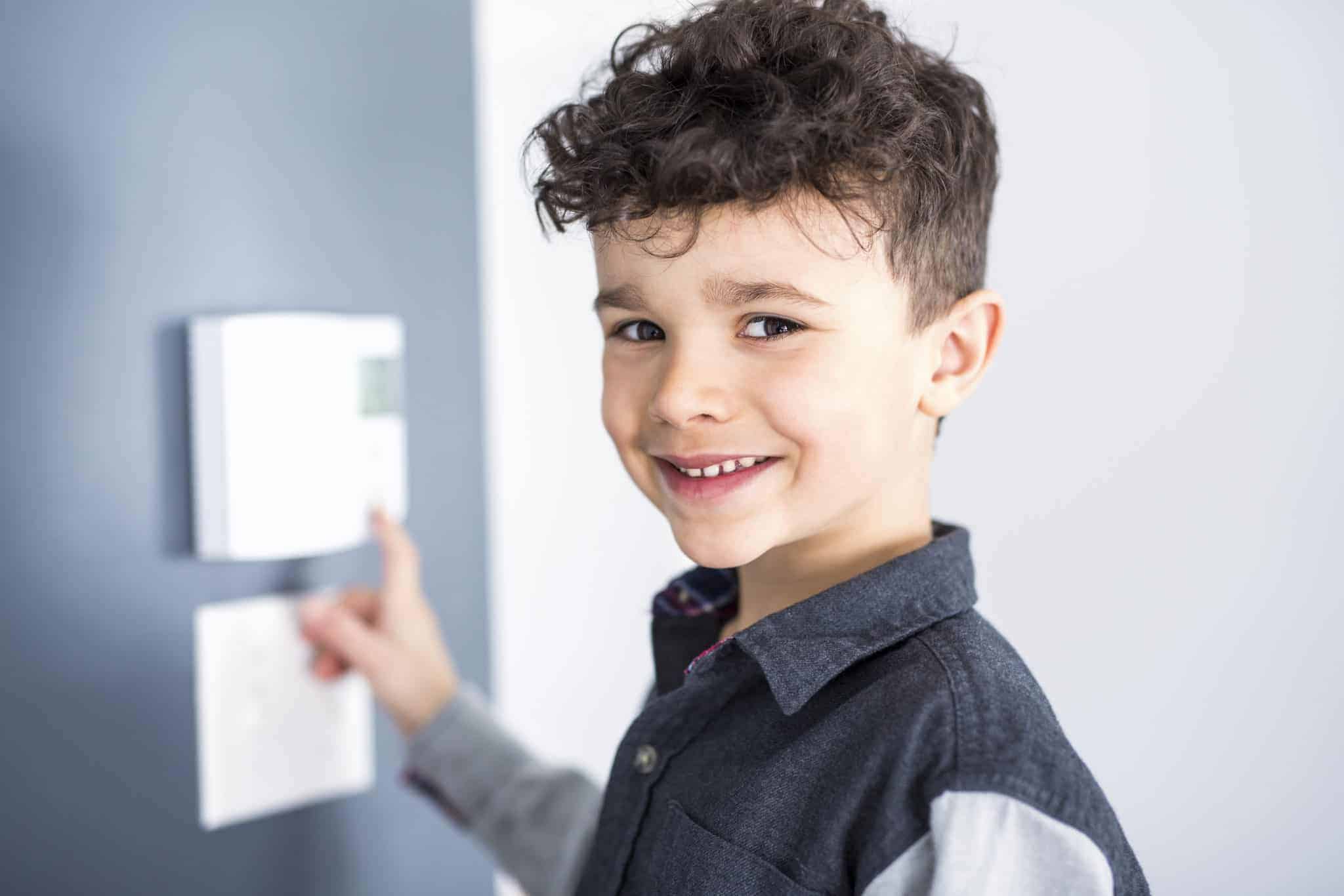Summer Thermostat Settings & Energy Saving Tips – Bell Bros
 I know a young couple who tell me they always fight over the thermostat—but their fights are actually a little different than the type my wife and I used to have when we were first married. We used to have a little ongoing conflict because I wanted our house to be nice and cool, but she wanted it as warm as a sauna.
I know a young couple who tell me they always fight over the thermostat—but their fights are actually a little different than the type my wife and I used to have when we were first married. We used to have a little ongoing conflict because I wanted our house to be nice and cool, but she wanted it as warm as a sauna.
These days, though, the tiff that many young couples seem to have isn’t so much about the temperature to set their thermostat to for comfort’s sake, but more about the best and most efficient way to set it in order to save on energy—and their monthly bills.
I think I can help end this little debate, so today I want to talk about what temperature to set the thermostat in summer for the best energy efficiency, as well as some other energy saving advice all Californians can use during the blistering hot summer months.
What Temperature to Set the Thermostat to In Summer to Save Energy?
We all know how hot it can get here in Northern California during the summer months. To most of us, that means keeping our homes icy cold by lowering our thermostats and trying not to think about the big energy bills coming our way. The good news is, if you know how to set your thermostat properly during the summer months, it is possible to stay cool without having to pay a fortune for your comfort.
The good news is, if you know how to set your thermostat properly during the summer months, it is possible to stay cool without having to pay a fortune for your comfort.
 Believe it or not, the Department of Energy recommends setting your thermostat to 78 degrees Fahrenheit during the warm summer months when you’re using central air conditioning. I know what you’re thinking—that’s awfully hot! If energy conservation is your jam, however, this is the way to go.
Believe it or not, the Department of Energy recommends setting your thermostat to 78 degrees Fahrenheit during the warm summer months when you’re using central air conditioning. I know what you’re thinking—that’s awfully hot! If energy conservation is your jam, however, this is the way to go.
Setting your thermostat to 78 degrees Fahrenheit can cut energy costs by up to 7%.
Setting your thermostat to 78 degrees Fahrenheit can cut energy costs by up to 7%. Basically, the smaller the discrepancy between the indoor and outdoor temperatures, the better energy savings you’ll rack up, so turn the thermostat down at night a bit.
A mistake a lot of people make when it comes to summer thermostat control is setting their thermostat to a lower temperature when they turn on their AC. Contrary to what one may think, this won’t cool your home any quicker, but it may, over time, make your house too chilly, which means you’ve wasted energy. Plus, if your house is way colder than the outdoor temperature, the heat flow into your home increases rapidly, which is what can really drain energy and raise those monthly utility bills.
Other Summer Energy-Saving Tips for Californians
If your energy bill is pretty high this summer despite your best intentions to set the thermostat in the most energy-efficient way possible, then I’ve got a few other energy saving tips for you to consider. These will not only save your wallet, but help save the planet as well.
Having a smart thermostat installed is the easiest way to control the temperature in your home without having to think about it.
- Install a smart thermostat: While you may have the best of intentions to set your thermostat to a temperature for the best energy savings, chances are it will slip your mind more often than you think. Having a smart thermostat installed is the easiest way to control the temperature in your home without having to think about it. All you have to do is program it once. If you’re out during the daytime, for example, your thermostat will automatically turn off the air conditioning so that it’s not wasting energy. It can then crank it back on just before you get home so your home is cool and comfortable when you walk in the door.
- Invest in a new HVAC system: If you’re finding that your energy bill is pretty high despite setting your thermostat according to the above recommendations and using your smart thermostat, it could be time to get a new HVAC system. If yours is over ten years old, it may be a good idea to call in an HVAC pro to assess your system and make recommendations for a new, more energy-efficient version. While it can be an expensive home upgrade, the good news is that not only will an energy-efficient HVAC system save you money in energy costs, there are also a lot of great residential HVAC financing programs in California that allow homeowners to make energy-efficient upgrades with no upfront costs.
- Consider upgrading to double pane windows: Did you know that single pane windows allow the transfer of heat into your home during the hot summer months? Installing double pane windows can help insulate your home by keeping warm air out in the summer, but inside during the winter. That way, all the work your HVAC and thermostat do won’t go to waste. In fact, double pane windows do such a good job at conserving energy in your home that they could actually save you around $340 a year if installed properly by a local window expert. Again, there are several financing, incentive, and rebate programs for energy-efficient windows, so be sure to check them out.
…not only will an energy-efficient HVAC system save you money in energy costs, there are also a lot of great residential HVAC financing programs in California that allow homeowners to make energy-efficient upgrades with no upfront costs.
If you’re seriously considering any of the above energy-saving tips, I suggest calling up your local contractor, like the friendly folks at Bell Brothers, and having a free energy assessment done on your home. They’ll be able to tell you where your energy leaks are and what you can do to save the most energy in your home.
Plus, if you decide to install a smart thermostat, a new HVAC, or new energy-efficient windows, they’ll be able to help you apply for financing—and they’ll do all the work too! That, I’m pretty sure, will be the end of your thermostat arguments for good.
At Bell Brothers, our trained HVAC professionals would love to help you save energy by installing a smart thermometer, a new energy-efficient HVAC, or double pane windows. Contact us today to schedule a free in-home consultation.
Image courtesy Lopolo

